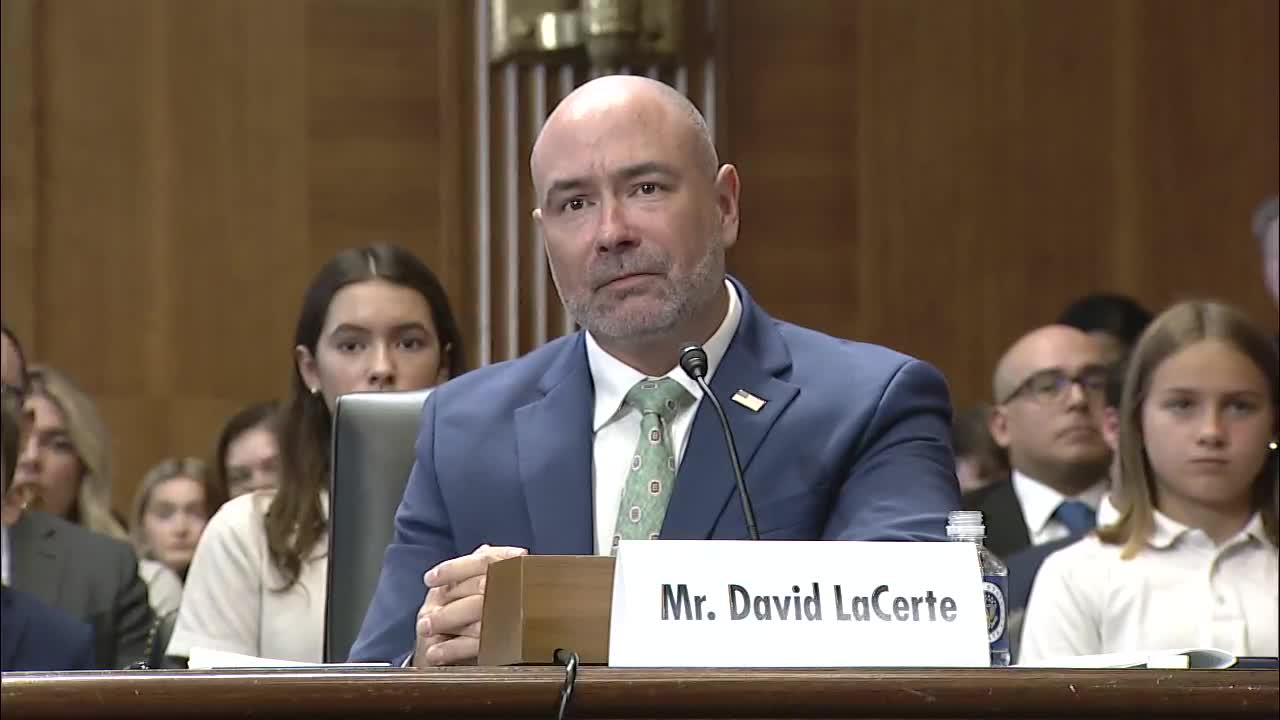FERC Officials Discuss Electricity Demand Growth and Renewable Energy Strategies
September 04, 2025 | Energy and Natural Resources: Senate Committee, Standing Committees - House & Senate, Congressional Hearings Compilation
This article was created by AI summarizing key points discussed. AI makes mistakes, so for full details and context, please refer to the video of the full meeting. Please report any errors so we can fix them. Report an error »

The U.S. Senate Committee on Energy and Natural Resources convened on September 4, 2025, to discuss critical nominations and the pressing challenges facing the energy sector. A significant focus of the hearing was the anticipated surge in electricity demand driven by advancements in artificial intelligence, data centers, and electrification. Committee members expressed concern that this demand could increase as much as 30% over the next decade, likening it to adding an entire new California to the national grid.
The Federal Energy Regulatory Commission (FERC) was highlighted as a key player in managing this growth. One nominee emphasized the importance of ensuring a reliable energy supply at reasonable rates, while also considering the unique characteristics of different geographic markets. The nominee acknowledged the urgency of addressing the rising demand, stating that it keeps them awake at night.
Senator Angus King raised questions about the independence of FERC, particularly regarding the president's authority to dismiss commissioners. The nominee reiterated a commitment to follow the law, regardless of any changes that may arise from the Supreme Court.
The discussion also touched on the cost-effectiveness of energy generation, with wind and solar identified as the cheapest sources available. Senator King pointed out that states like Iowa benefit significantly from wind power, which supplies 60% of their electricity and has contributed to lower electricity costs compared to the national average.
The committee explored the need for rapid deployment of renewable energy sources, emphasizing that wind and solar projects can be operational much faster than traditional gas plants. The urgency of expanding the grid to accommodate increased demand was also a central theme, with concerns about the high costs associated with such expansions.
The hearing concluded with a call for FERC to adopt grid-enhancing technologies to improve efficiency and reduce costs for consumers. The nominees were urged to prioritize reliability, cost, and availability in their decision-making processes, ensuring that the energy sector can meet the challenges of the future.
The Federal Energy Regulatory Commission (FERC) was highlighted as a key player in managing this growth. One nominee emphasized the importance of ensuring a reliable energy supply at reasonable rates, while also considering the unique characteristics of different geographic markets. The nominee acknowledged the urgency of addressing the rising demand, stating that it keeps them awake at night.
Senator Angus King raised questions about the independence of FERC, particularly regarding the president's authority to dismiss commissioners. The nominee reiterated a commitment to follow the law, regardless of any changes that may arise from the Supreme Court.
The discussion also touched on the cost-effectiveness of energy generation, with wind and solar identified as the cheapest sources available. Senator King pointed out that states like Iowa benefit significantly from wind power, which supplies 60% of their electricity and has contributed to lower electricity costs compared to the national average.
The committee explored the need for rapid deployment of renewable energy sources, emphasizing that wind and solar projects can be operational much faster than traditional gas plants. The urgency of expanding the grid to accommodate increased demand was also a central theme, with concerns about the high costs associated with such expansions.
The hearing concluded with a call for FERC to adopt grid-enhancing technologies to improve efficiency and reduce costs for consumers. The nominees were urged to prioritize reliability, cost, and availability in their decision-making processes, ensuring that the energy sector can meet the challenges of the future.
View full meeting
This article is based on a recent meeting—watch the full video and explore the complete transcript for deeper insights into the discussion.
View full meeting